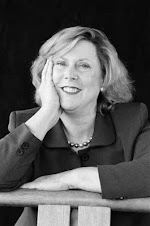One of the wonderful things about the Grand Tasting at
Northstar, part of the annual Lake Tahoe Autumn Food and Wine Festival, is its
timing. This is the festival for serious
foodies and wine-drinkers, held outside the rush of summer activities.
At this Grand Tasting, too, you find wines that will
definitely be available for enjoyment for the coming months. Twenty-two wineries were paired with
purveyors of good food from the region, including restaurants, caterers, and
resorts .
 |
| Ox from Sunnyside Resort (in hat) pours ZD wines for Scott Billeci |
ZD Winery poured its
2012 Chardonnay, California. The
winemaker at ZD has developed a signature style of
rich yet balanced fruit-driven Chardonnays.
The aroma reaches out from the glass and is redolent of bright tropical
fruit, and you may also note some vanilla and orange blossom too. You’ll taste a full-bodied chardonnay with primarily
pineapple and mandarin notes with a bit of lemon. This wine has great natural acidity and yes,
it is oakey, but the oak is subtle. 13.5
per cent alcohol. $37/bottle at www.ZDwines.com.
 |
| Monica Lara of The Chocolate Bar poured for Davis Bynum wines |
Davis Bynum 2011 Pinot Noir, Jane’s Vineyard, Russian River Valley, Sonoma County. According to the winemaker, Jane’s Vineyard is in the golden triangle of the “Santa Rosa plain” region of the valley, an area that has
iconic local climate for grape growing.
The result is a wine that is food friendly, a little lighter than many
Pinot Noirs, fruit-driven and crisp with a round soft mouthfeel, from aging in
French Oak barrels. 14.5 percent
alcohol. $35/bottle at www.davisbynum.com .
 |
| Joshua Plack of Martis Camp pours Long Meadow Ranch wines for Pamela Schmidt |
Long
Meadow Ranch poured its 2012 Sauvignon Blanc, featuring fruit from their
Rutherford Estate. This estate is
regarded by many as one of the finest sites for white wine in all of Napa. The aroma and taste feature layers of stone fruit, pineapple and
melon. There are also floral notes of
jasmine, guava and citrus. It is a dry wine with a mouthwatering finish. 12.9 percent alcohol. $20/bottle at www.longmeadowranch.com
 |
| Lou Phillips, wine educator and Director-School of Wine, pours CrossBarn/Paul Hobbs for Denis Dakoulis |
The
2011 Sonoma Coast Pinot Noir, CrossBarn, is a project of the well-known Paul
Hobbs. An aroma of wild berries and rose
petals leads to layers of taste of blackberries and perhaps cola, with spice of
vanilla and anise. Fine tannins and
balanced acidity lead to a lovely long finish.
14.5 percent alcohol. $31.99/bottle
at some internet sites. Sold out at the
winery.
 |
| Erin Crain of Blends/Renwood pours for Adam Cishop of 941 Eatery & Bar (Incline Village) |
The
Renwood 2011 Zinfandel, Fiddletown, is a complex zin with flavors of dark
chocolate, fruit, and toffee intermingling.
There’s a nice tannic structure to this wine that gives it great body.
It is made from high elevation Sierra Foothills grapes, and has a long finish
and a hint of sweetness. 14.8 percent
alcohol. $24.99 at www.renwood.com
This column appeared in The Tahoe Weekly on September 25, 2013




















